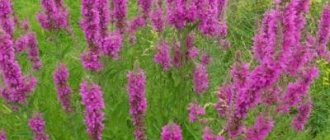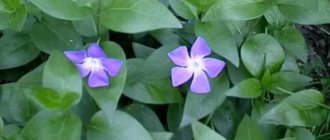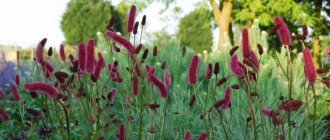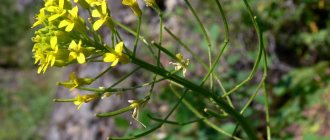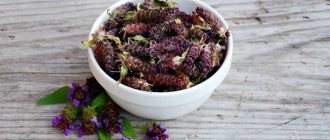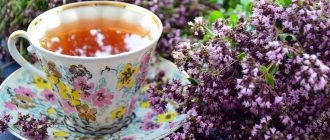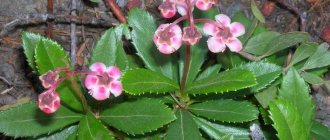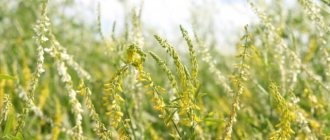Among the inconspicuous meadow herbs you can find many very beneficial for health. If you know what they look like and how to use them, you can do without pills and expensive medical procedures. The knotweed is a prime example of this. This humble plant, which many people mistake for weeds, is so good for hemorrhoids that it is popularly called hemorrhoid grass. Those who have used it to get rid of their delicate problem speak about the knotweed with delight and recommend it instead of expensive ointments and suppositories. We offer a detailed description of this herb, methods of harvesting it and recipes for preparing medicines from it for hemorrhoids and other diseases.
Botanical description
The knotweed belongs to the buckwheat family and to the genus with the beautiful name Persicaria. Outwardly, he is not particularly remarkable. Its thin, erect stem can grow up to 1 meter and higher, but there are also very small plants up to 10 cm in height. In tall specimens, the stem has many nodes (knobs) that provide it with some rigidity. Due to this feature, the highlander in some regions is called multi-knee. Almost always in these places branching of the stem is observed.
The leaves of the knotweed are a bit like peach leaves. They are green, long and narrow (up to 20 mm wide and up to 110 mm long), with a sharp tip and a dark spot in the middle. By this feature, the plant can be distinguished from other species. The leaves are arranged quite densely on the stem. They have practically no petioles (sessile); at the base they are equipped with a ciliated bell that encloses the stem.
The flowers of this herb are small and inconspicuous, collected in an inflorescence of spikes. Its length rarely exceeds 60 mm. More often, such dense but short spikelets are 30-40 mm in size. They are located on the tops of the stems. The tone of the petals is pink or white. The plant blooms from early summer until frost.
As a result of pollination, fruits are formed - small shiny nuts. They are black in color, covered with a filmy perianth, and have a triangular or ovoid shape.
The root of this species of knotweed is taproot, with virtually no branches. In autumn the plant dries out, as it is an annual. Reproduction is carried out by seeds.
Habitat
The knotweed loves moisture. Therefore, you can find it on the banks of rivers, lakes, artificial canals, near ponds and estuaries. However, this plant has learned to survive relatively far from water. It is found in floodplain meadows, in irrigated gardens, along roads (in regions with a rainy climate).
Hemorrhoid grass grows almost all over the world. It is found in Europe (from Portugal to Greenland), in Asia (including Japan and Indonesia), in Australia, in New Zealand, in America, where it was introduced by accident. In Russia, it can be found throughout the entire territory, except for the northernmost regions.
Chemical composition
The modest herb Knotweed is incredibly rich in various chemicals. The beneficial properties and contraindications for the use of this wonderful plant are determined precisely by what is contained in its above-ground parts.
Hydroxymethylanthraquinones were found in its root. These substances are needed to protect the knotweed from pests living in the soil. Hydroxymethylanthraquinones are derivatives of anthracene and can be used as a laxative or antibacterial. But the process of extracting them from plants (especially those that contain small amounts) is complicated. Even a small mistake can change their properties. Therefore, the root of the kidney plant is used extremely rarely.
In its ground parts the following were found:
- tannin;
- flavonoids (rutin, quercitrin, avicularin, hyperoside);
- essential oil;
- slime;
- organic acids (butyric, gallic, acetic);
- pectins;
- tannins;
- ascorbic acid;
- carbohydrates;
- vitamin K;
- calcium oxalate.
Recipes for treatment
Kidneyweed contains phlobaphenes, tannins, vitamins K and C, organic acids, flavonoids, essential oil, mucus. The herb for medicinal purposes is harvested when the plant is in flower. It has a diuretic, laxative, analgesic, hemostatic and anti-inflammatory effect, constricts blood vessels, increases blood viscosity and coagulability, tones the uterus and intestines. To treat hemorrhoids, pour 1 tbsp into a glass of boiling water. kidneyweed herbs, infused for 1-2 hours in a sealed container, filtered and taken 3 times a day, 2 tbsp. before meals for 1-3 weeks. Pour 1 tbsp with a glass of boiling water. kidneyweed herbs, infuse for 2 hours under the lid, strain into a bath of warm water and take a 10-minute bath.
For periodontal disease, pour 1 tsp into a glass of boiling water. dry grass of the kidney plant, infuse for 2 hours, filter and take 3 times a day, 1/3 cup before meals. The infusion is used to make applications or mouth baths for abscesses with a hot infusion.
The plant is an annual plant, has a small taproot and prostrate, ascending or recumbent shoots. The leaves are oval, small. Very small flowers, whitish-green, sometimes pinkish, collected in the axils of the leaves, bloom in June-August.
The aerial part contains vitamins C, E, flavone glycoside avicularin, tannins, carotene, resins, wax, mucus. The herb for treatment is collected when the plant blooms. It has astringent, diuretic, anthelmintic, and hemostatic properties. Useful especially for removing stones from the kidneys and bladder. For better hair growth, wash your hair with the decoction.
For uterine bleeding, take 1 part of the fruits of common barberry, bird knotweed herb, white mistletoe herb and shepherd's purse herb. Pour 1 tbsp into a glass of boiling water. mixture, infuse for half an hour, filter and take 2-3 times a day, 1/2 cup.
For urolithiasis, pour 3 tablespoons of boiling water into a glass. crushed bird knotweed herbs, in a sealed container, heated in a water bath for 10-15 minutes, infused for half an hour, filtered and taken 2-3 times a day, 1/2 cup before meals. Pour 1 tbsp with a glass of boiling water. herbs, infused, filtered and taken 2-3 times a day, 1-2 tbsp. before meals.
For pneumonia, mix 3 parts of bird knotweed herb, 1 part of juniper berries and 2 parts of horsetail herb. 3 tbsp. The mixture is brewed in 0.5 liters. boiling water, leave for half an hour, filter and drink 2-3 sips per day.
For heart failure, take 3 parts of bird knotweed herb, 5 parts of hawthorn flowers, 2 parts of horsetail herb. Pour 2 tsp with a glass of boiling water. mixture, infuse for an hour, filter and drink small sips throughout the day.
For pulmonary tuberculosis, mix the herb of bird's knotweed and licorice root equally. 3 tbsp. The mixture is brewed in 0.5 liters. boiling water, simmer for 5 minutes over low heat, leave for half an hour and drink in 5-6 doses per day.
For cystitis, pour 20 g of bird knotweed herb into a glass of boiling water, leave covered for 2 hours and drink 3 times a day. In a ratio of 1:10, pour boiling water over the chopped herb, place in a water bath for 5-10 minutes, leave for 1-2 hours, filter and take 1 tbsp 3-4 times a day.
When tired and fatigued, pour 1 tbsp into a glass of boiling water. herbs, wrapped, infused for half an hour, filtered and taken 3 times a day, 1-2 tbsp. before meals for 2-3 weeks.
In case of hair loss, brew 10-15 g of dry herbs in a thermos with a glass of boiling water for half an hour and filter. The infusion is rubbed into the scalp daily for 15 minutes. A total of 20 procedures are carried out, and if necessary, repeated after a month.
For hemorrhoids, in a ratio of 1:5, pour the grass with cold water, put it in a water bath for half an hour, filter it and make baths.
For periodontal disease, pour 3 tbsp into a glass of boiling water. fresh herbs, infuse for an hour, filter and make mouth baths 3 times a day. Used for bleeding gums.
From the same series:
Highlanders
Sarepta mustard (Brassica juncea)
Cornflower blue
Beneficial properties of knotweed
Many people know that this herb is used to treat hemorrhoids. But preparations made from it also have the following therapeutic properties:
- Laxative.
- Hemostatic.
- Antibacterial.
- Wound healing.
- Anthelmintic.
- Painkiller.
- Diuretic.
- Anti-inflammatory.
- Antitumor (used only in folk medicine).
Preparations from hemorrhoid herbs can increase blood viscosity, improve the condition of blood vessels (lymphatic and circulatory), and have a beneficial effect on the functioning of the heart.
What ailments does it treat?
The health benefits of knotweed are used in the treatment of the following diseases:
- hypertension;
- heart failure;
- constipation;
- fibromatosis and uterine atony;
- colpitis (douching);
- uterine bleeding;
- cystitis;
- bladder cancer and stomach cancer (in folk medicine);
- urolithiasis disease.
Externally as lotions and compresses for:
- radiculitis;
- gout;
- rheumatism;
- headaches;
- lichen;
- wounds and rashes of various types.
For rinsing with:
- sore throat;
- gingivitis;
- stomatitis;
- laryngitis.
Preparation of raw materials of knotweed
Knotweed herb is used for medicinal purposes only if properly harvested, which should be done during the flowering period of this plant. Only the upper parts of the grass are cut off; they are located at a distance of 15-25 cm from the soil surface. It is worth leaving about 2-3 plants for every 2-3 square meters. all its thickets.
The raw materials are dried in the shade in the open air, but it is better to dry them on special dryers with artificial heating, and there is no need to set the temperature above 40-50 0C.
Under slow drying conditions, knotweed grass may turn black. Raw materials are good for 2 years. The plant has a bitter taste and no odor at all.
Contraindications
There is not a single medicine that can be used by absolutely all patients, and there is not a single plant that has the same effect on every person. This also applies to the knotweed. Contraindications for ingesting decoctions and tinctures from it are based on the fact that this plant is poisonous. This means that they must be used without violating the dosage and without exceeding the recommended courses of treatment. This herb should not be used for the following conditions and diseases:
- Pregnancy. Highlander increases the tone of the uterus, which can lead to miscarriage or premature birth.
- Thrombophlebitis, varicose veins, thrombosis. Polygonum preparations increase blood viscosity, which promotes thrombus formation.
- Childhood.
- Allergy to substances contained in this herb, which causes individual intolerance to drugs based on it.
Honey
Beekeepers know what a good honey plant the knotweed is. The properties of the plant are partly manifested in the honey made from it. It tastes great. When sugared, small crystals form in it. The color of honey varies from light to dark depending on various reasons. The main difficulty is that it is almost impossible to collect only knotweed honey because it is not cultivated on an industrial scale. Bees take bribes not only from this grass, but also from other flowers growing next to it. Therefore, in essence, the honey turns out to be floral. However, if you find a section of meadow where there are continuous thickets of knotweed, then you can take up to 225 kg of honey from 1 hectare. Despite the fact that it does not have the contraindications listed above, it should be consumed in moderation.
Polygonum: recipes
Traditional healers know many ways to prepare potions from this herb to treat various ailments. These can be decoctions for oral administration, decoctions and infusions for gargling (for example, throat), tinctures for compresses and rubbing, ointments. It is necessary to observe the dosage in the manufacture and use of all drugs, especially those used orally.
The simplest recipe for hemorrhoids. You can prepare an alcohol tincture from knotweed: pour 15 grams of raw material (dry and crushed) into a glass of any vodka. This mixture must be infused for two weeks, shaking regularly. On the 15th day, the tincture needs to be strained. It is taken orally, 40 drops before each meal.
For hemorrhoids, decoctions for sitz baths are also prepared from this herb.
Knotweed for hemorrhoids: recipes for remedies and methods of their use
Not only baths can be prepared from Highlander Pochechuyny for hemorrhoids. There are many recipes for preparing this herb. For example, a decoction of it can be taken internally. To prepare the tincture, you need to grind 2 tablespoons of Pochechuynik and pour boiling water over it; 0.5 liters of liquid will be enough. Leave the pochechuynik to steep for 12 hours. After this time, the broth must be filtered. You need to take the prepared tincture three times a day, 50 ml.
The herb for hemorrhoids is used to prepare lotions to stop bleeding, inflammation and reduce hemorrhoids. To make a compress, pour boiling water over the herb, leave for a while and cool to room temperature. Moisten cotton pads or gauze pads with the resulting infusion and apply to the affected area. Do not throw away the herb for hemorrhoids Highlander remaining after filtering the decoctions and tinctures.
Suppositories - suppositories based on medicinal plants - are considered an excellent remedy for the treatment of hemorrhoids. You can prepare them at home; to do this, first prepare a decoction of knotweed, then cool it and pour it into ice trays, then freeze it. It is necessary to insert such an ice suppository into the rectum at night.
Another way to prepare suppositories:
- Melt a small piece of lard over low heat.
- Prepare a decoction of Polygonum, cool, add to the melted lard.
- For viscosity, add a little starch and Vaseline to the mixture and freeze.
Knotweed is an excellent folk remedy for combating hemorrhoids, which does not require large financial costs. Before treatment, it is necessary to make sure that the patient does not have any serious health problems, since the medicinal herb has a number of contraindications for use:
- It is prohibited to use as a medicine in case of thrombosis or a tendency to such.
- Contraindications are renal failure and chronic liver or stomach diseases.
- Healing substances and components contained in ointments, suppositories and infusions can cause an allergic reaction and individual intolerance.
Uncontrolled use of knotweed-based products can cause unpleasant consequences in the form of intestinal dysbiosis. If the patient does not have any information about the state of his health, then it is necessary to consult a doctor.
Folk recipes and methods of using knotweed for hemorrhoids have been developed. Both self-prepared products and those purchased at the pharmacy are used.
Before using preparations from the knotweed herb internally, it is recommended to consult a doctor for contraindications.
Pochechuy is a poisonous plant and should be used with extreme caution. Let's consider recipes for the most popular and effective remedies with kidney herbs, as well as methods of their use in the treatment of hemorrhoids
Let's look at recipes for the most popular and effective remedies with kidney herbs, as well as methods of using them in the treatment of hemorrhoids.
Infusion and tincture of kidney herb for internal use
To prepare the infusion you will need the following ingredients:
- two tablespoons of dry extract of knotweed;
- two glasses of water.
Regular intake of an infusion of kidney herb will strengthen blood vessels and help minimize the risk of bleeding from hemorrhoids.
Also, such herbal medicine will help you forget about constipation, which is very important for hemorrhoids.
In addition to the infusion, when treating hemorrhoids, you can use a tincture of knotweed, which can be bought at a pharmacy. In case of exacerbation of the disease, it is necessary to take 35-40 drops of this tincture three times a day until the symptoms alleviate.
Given the risk of side effects, knotweed is contraindicated in the following cases:
- pregnancy;
- anorectal thrombosis;
- thrombophilia;
- severe kidney pathology;
- allergy to this plant.
The attending physician will help you avoid negative consequences when treating hemorrhoids with kidney herb, who will determine the appropriateness of such therapy and rule out the presence of contraindications.
Herbalists among the people may not have known the entire composition of the mountaineer, but they knew for sure that a patient suffering from kidney disease would be cured if he followed their instructions. They recommended using the medicinal herb both fresh and in the form of decoctions and tinctures. This insidious disease is also accompanied by pain. Gorchak removes them and alleviates the patient’s condition. Bloody discharge stops after several procedures. The “bumps” of the anus are slowly decreasing.
Recipes for external use
To get rid of hemorrhoids, knotweed is used to prepare the following therapeutic agents:
- Decoction for baths. The grass (dried and crushed) is taken in the amount of 4 spoons for the soup, poured with boiling water (500-600 ml) and left to simmer in a water bath for about 40 minutes. You can simply let the broth boil and then cool it to an acceptable temperature, but the medicine prepared in a water bath will be more effective. After 40 minutes, the broth is filtered through cheesecloth or a strainer, more water is added and poured into a bowl of such a volume that the buttocks can be placed in it. Sitz baths are carried out in a warm medicinal product. They can only be done if the hemorrhoids do not bleed. The number of procedures is not limited. Duration - until the water cools down. After the bath, it is very useful to lubricate the sore spot with a medicinal cream and lie down so as not to put stress on the muscles.
- Poultices. They are not specially prepared. For poultices, use the cake that remains after filtering the decoction of kidneyweed. The grass is squeezed until water stops flowing out of the cake, wrapped in 1 layer of gauze and applied to the problem area. The procedure lasts until the medicine cools down. The cake can also treat swelling of the legs and pain in the joints due to rheumatism.
Healing ointment
This is another remedy from knotweed that is effective for hemorrhoids. Making the ointment is quite simple. Using the method described above, you need to prepare a decoction of this herb, mix it with honey (you can use any). Proportions 1:1. Add butter to the mixture and beat until a homogeneous, fairly thick mass is obtained. Store the ointment in the refrigerator. Use several times a day.
How to use?
According to herbalists, knotweed will help ease the clinical picture of hemorrhoids. No wonder the weed was so popular among our ancestors.
Decoction: for ten grams of dry raw materials you need to take half a liter of water. Place the ingredients on the stove and heat for 15 minutes. Then cover with a terry towel and let the solution sit for several hours. When it cools down, filter through a strainer. Take half a glass orally 20 minutes before meals (three times a day).
If you don’t want to bother with the infusion, then a ready-made extract can be purchased at any pharmacy. Take 40 drops three times a day (before meals). The alcohol tincture also has a laxative effect. The duration of therapy depends on the stage of the disease, but on average ranges from seven days to a month. For better results, it is recommended to take baths. For these purposes, preparations based on knotweed are used.
Treatment of hemorrhoids with bleeding
There are several recipes for drugs that help stop bleeding (uterine and hemorrhoidal). All drugs are taken orally. Proportions are given for dry crushed raw materials.
- Infusion. Pour 2 soup spoons of raw material into a thermos, add 500 ml of boiling water. Close the thermos. Leave for 2 hours. Filter. Drink 25 ml (about 3 tablespoons) before each meal. This medicine prevents bleeding and improves intestinal motility.
- A decoction that can be used not only for bleeding, but also for constipation, gum problems (periodontal disease, scurvy). Take 2 soup spoons of raw materials, pour 200 ml of boiling water over them and leave to simmer in a water bath for about 15 minutes. Cool and filter. You need to drink the product before each meal, about 20 minutes before it starts. Dosage – 1 tbsp. spoon. To treat gums with this drug, rinse the mouth.
- Infusion. First, prepare a decoction from the herb of the knotweed. To do this, take 1 soup spoon of raw material, pour in 500 ml of hot water and boil for about 15 minutes. Next, the product is infused for 2 hours and filtered. Drink 100 ml before meals.
Knotweed herb - use in folk medicine
In many areas of medicine, preparations made from the knotweed herb are used. There are various options for using decoctions and infusions in recipes. Apply this way:
- Externally, knotweed is in the form of a decoction. They are used as lotions for treating wounds - they contain tannins and antiseptic substances. Used as a rinse for hair loss and to treat skin diseases.
- For douching for gynecological inflammations.
- Drink infusions internally for acute diseases of the stomach and kidneys.
Decoctions of knotweed
One of the forms of using a medicinal plant is decoctions. They are used for gargling, preparing compresses and lotions, foot baths, and for internal use. To make a decoction you need:
- Pour 10 grams of dry raw material with water - 400 ml;
- boil for 20 minutes;
- cool;
- strain.
- How to remove fat from the stomach and sides at home. Correct exercises to quickly lose belly fat, video
- Mascarpone - what is it: recipes with cheese
- Gravy for cutlets: delicious recipes
Infusion of bird knotweed
Using knotweed in the form of an infusion is more powerful due to the technology of preparation in a water bath. It helps to extract beneficial substances from the plant. The finished infusion is stored in the refrigerator. For preparation you need:
- take a spoonful of dry raw materials;
- add 30 ml of water;
- keep covered in a bathhouse for 20 minutes;
- remove from heat, leave for an hour;
- strain;
- add boiled water to 200 ml.
Bird buckwheat tea
In folk medicine, the medicinal plant is used to treat respiratory diseases, bronchitis complicated by a severe cough. Teas are prepared for this purpose. They help relieve inflammation and have an antibacterial effect. They drink 3 cups of tea per day. To prepare you need:
- take 8 spoons with the top of dry knotweed leaves;
- pour a liter of cold water;
- boil;
- take off;
- strain.
Knotweed juice
To increase immunity, treat abscesses, stomach ulcers, use fresh plant juice. The healing composition helps to dissolve the stones into fine sand and painlessly remove it from the bladder. To prepare juice, you need to collect raw materials during flowering. On prescription:
- the grass is cleared of dry leaves;
- remove roots;
- grind using a meat grinder or blender;
- squeeze through several layers of gauze.
Procurement of raw materials
When collecting knotweed, you need to be able to distinguish it from other similar species. The most similar to it is rough mountaineer (spreading), which does not have the necessary medicinal properties. Plants can be distinguished by their characteristic features. The rough knotweed has dense hairs on its peduncles. They are also on the underside of the sheet and on the bells (elbows).
The collection of ground parts of knotweed is carried out during the flowering period. In this case, it is imperative to leave several bushes alive so that they can give birth to offspring.
The collected grass is carefully reviewed, removing all unnecessary plants from the collection (for example, rough knotweed). The remaining mass is dried, trying not to delay the process. Raw materials suitable for use should not darken. If this happens during the drying process, the grass is thrown away.
How and when to harvest knotweed
It is necessary to harvest knotweed during the flowering and budding period. For harvesting, use the upper part of the plant.
Before drying, cut grass must be sorted out, debris and brown shoots removed. The herb should be dried in free air, in the shade, in the attic or in a shed, stirring occasionally. Dry grass has a bitter taste, just like knotweed herb.
Dried raw materials should be stored in paper bags or thick canvas bags in a dry place. The shelf life of dry raw materials is no more than two years.
Medicinal plants. Large illustrated encyclopedia This book is unique.
- This is also a guide to plants, both wild and cultivated, that can be used for medicinal purposes, as it contains their visual photographs and full characteristics.
- And a herbalist - thanks to a variety of recipes used for the most common diseases, with precise dosages and a detailed description of the preparation process.
- And a guide to collecting and preparing medicinal herbs.
- And even a guide to growing and caring for cultivated medicinal plants.
The author of this encyclopedia is T.A. Ilyina, a candidate of biological sciences, summarized her own experience and professional knowledge. Buy the electronic version Buy the paper version
